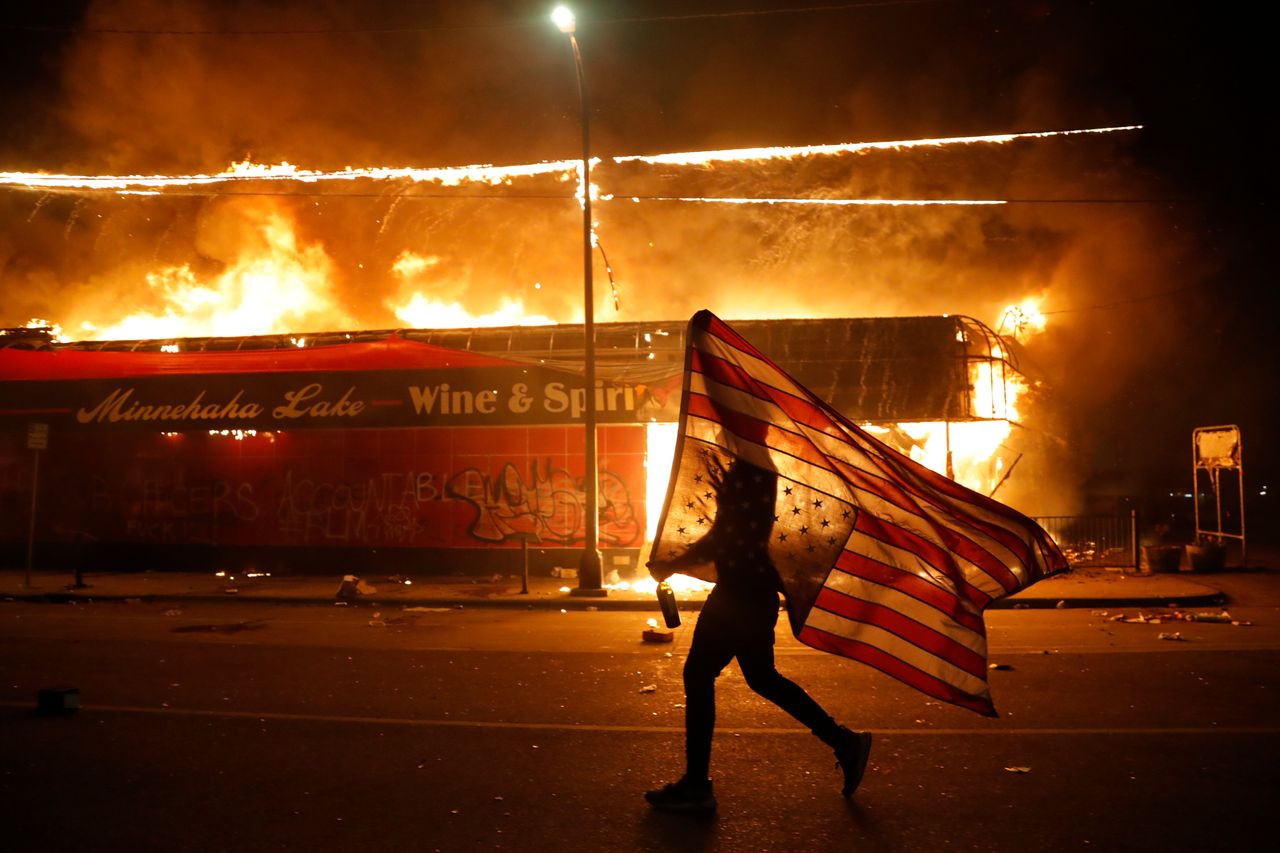‘Please, please, please, I can’t breathe. Please, man.’
On Monday night, George Floyd died after being arrested by police in Minneapolis.
Video taken by a bystander showed the 46-year-old pleading that he could not breathe as a white officer knelt on his neck.
Police said the man matched the description of a suspect in a forgery case at a grocery store, and that he resisted arrest. The unidentified officer ignores his pleas. “Please, please, please, I can’t breathe. Please, man”, the man is heard telling the officer.
After several minutes, one of the officers tells the man to “relax”. Minutes pass, and the man becomes motionless under the officer’s restraint. The officer leaves his knee on the man’s neck for several minutes more.
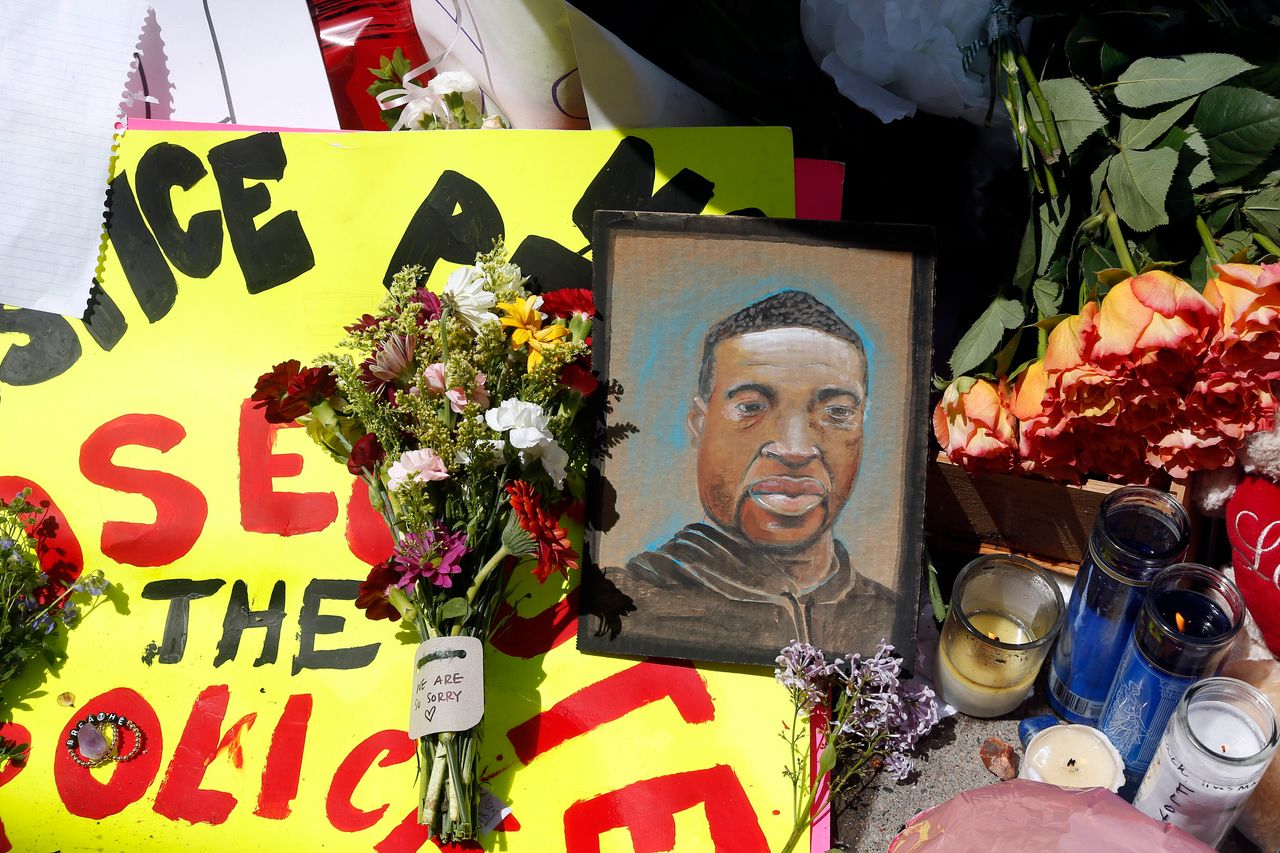
‘This is the right call.’
On Tuesday it was announced that four Minneapolis police officers involved in the arrest of Floyd would be fired. No further action against them is mentioned.
Minneapolis mayor Jacob Frey tweeted about the news, saying: “This is the right call.”
‘Cops murdered George Floyd’
The news that the officers would just be fired sparks anger in Minneapolis and crowds gather for what are largely peaceful protests near the spot where Floyd was detained.
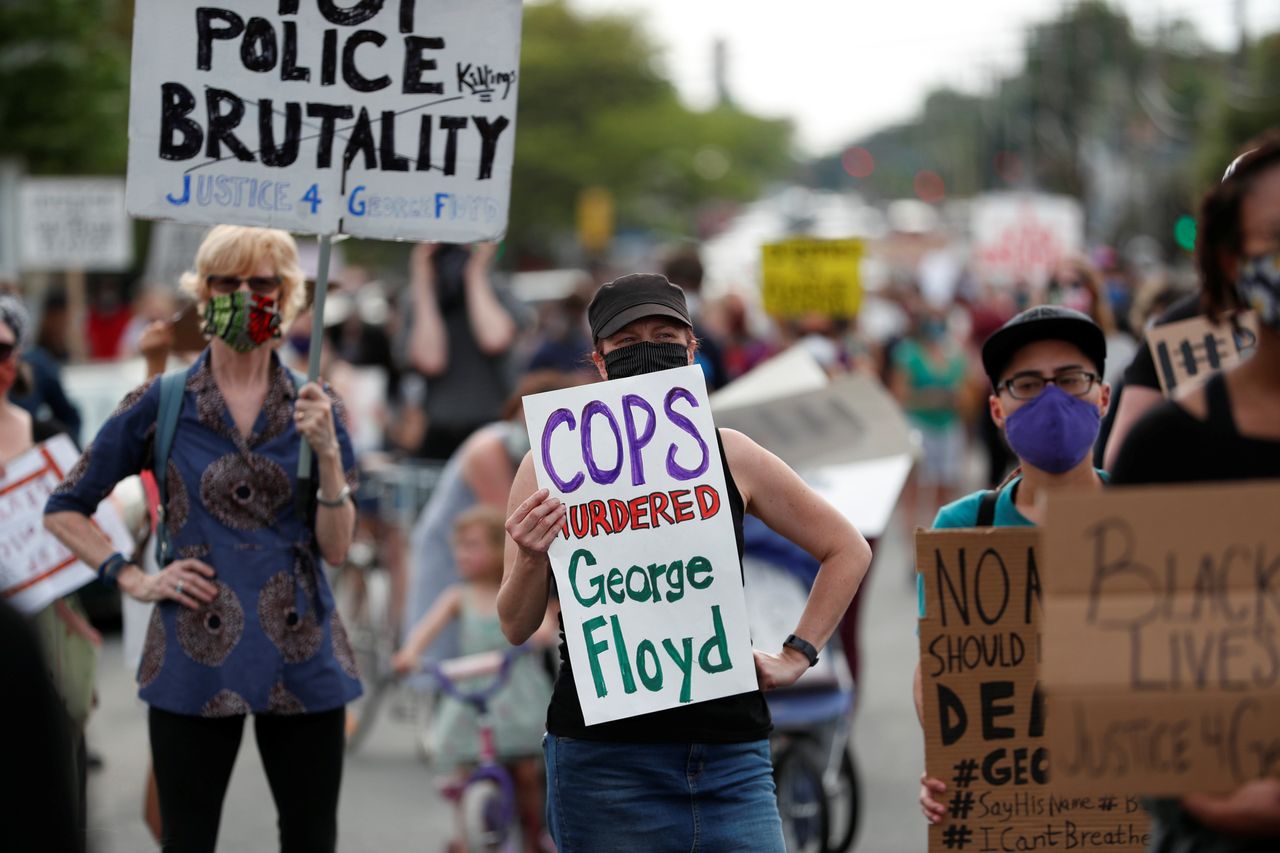
Police officers firing tear gas are deployed to disperse the crowds.
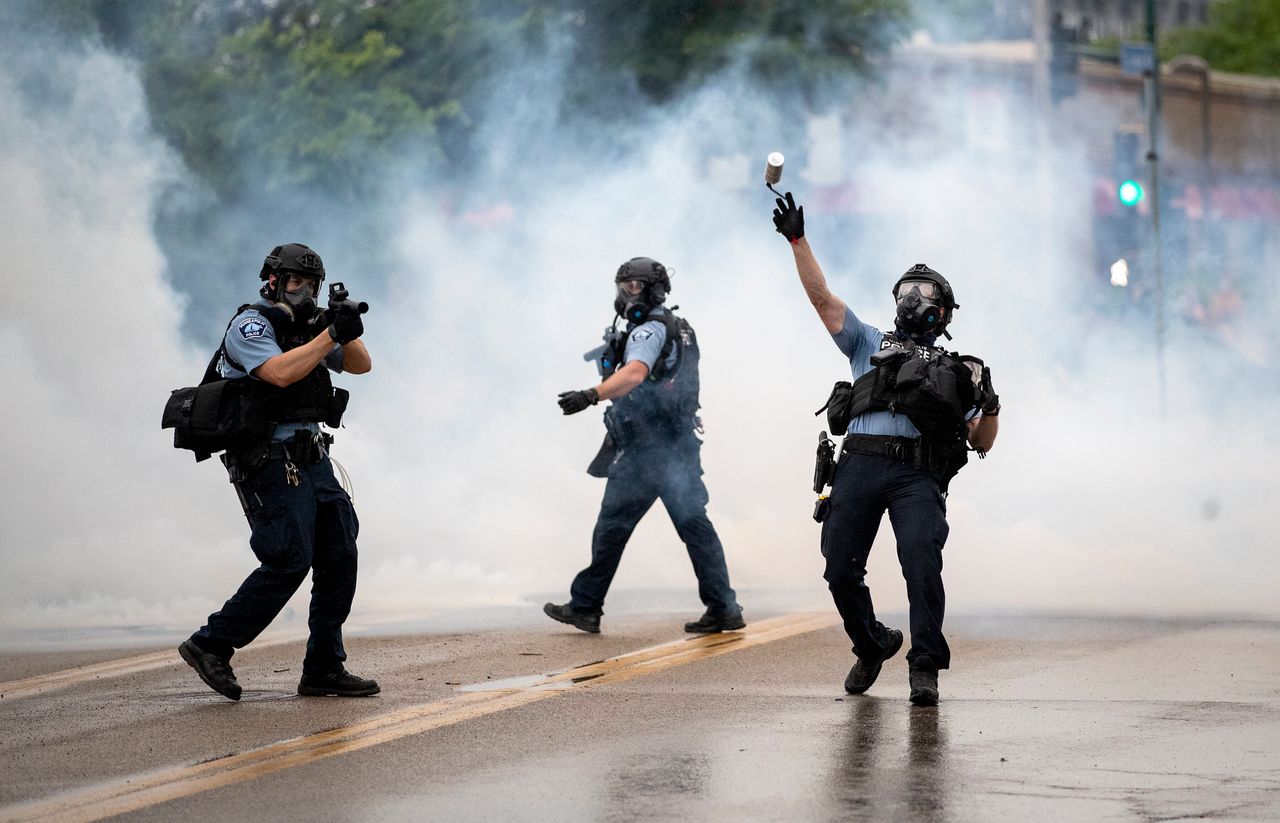
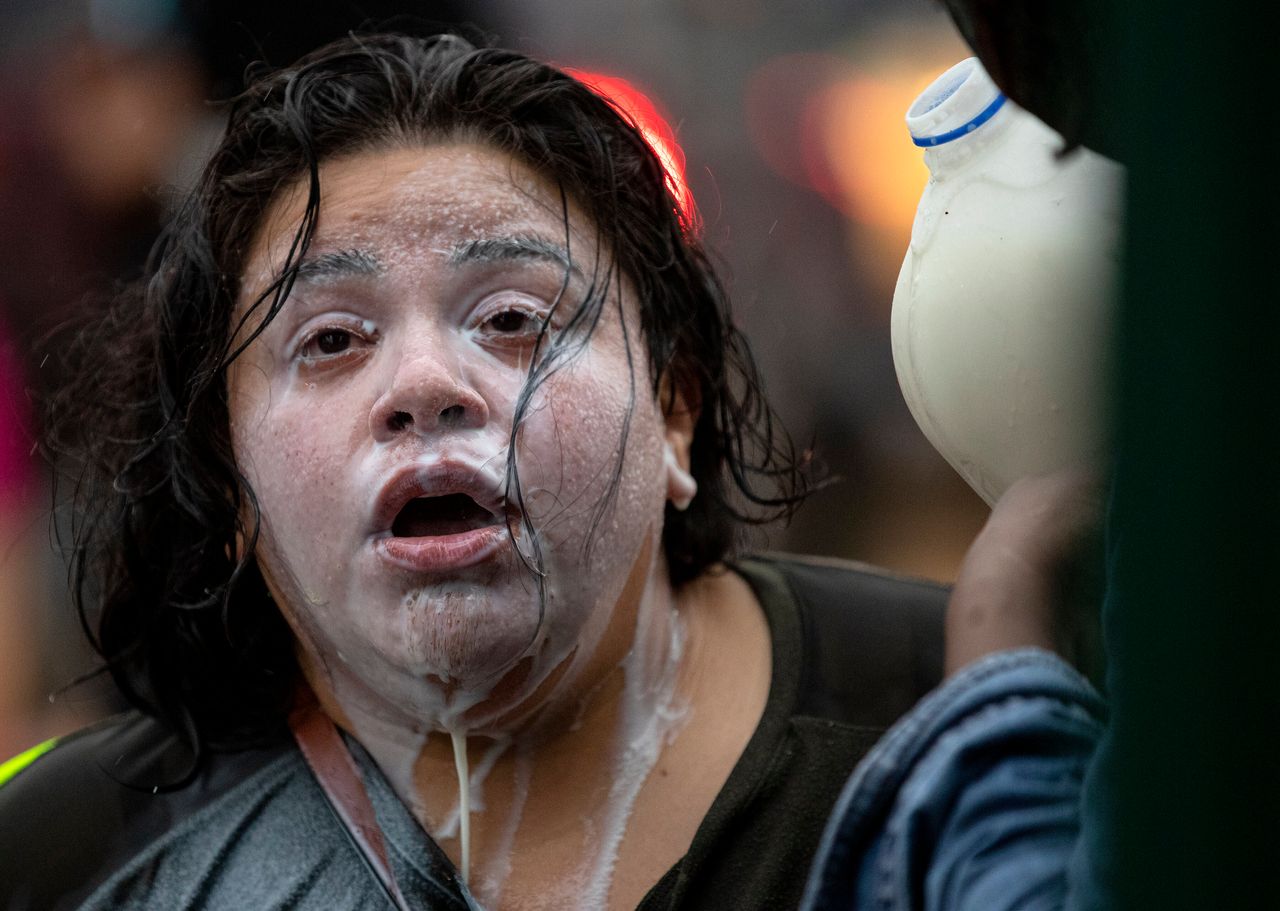
‘No justice, no peace’
On Wednesday, mayor Jacob Frey urged prosecutors to file criminal charges against the white police officer shown pinning Floyd to the street.
The city identified the four officers as Derek Chauvin, Thomas Lane, Tou Thao and J Alexander Kueng. It did not say who knelt on Floyd’s neck, and gave no further information.
The number of protestors increased dramatically by Wednesday night and acts of looting and vandalism also occurred.
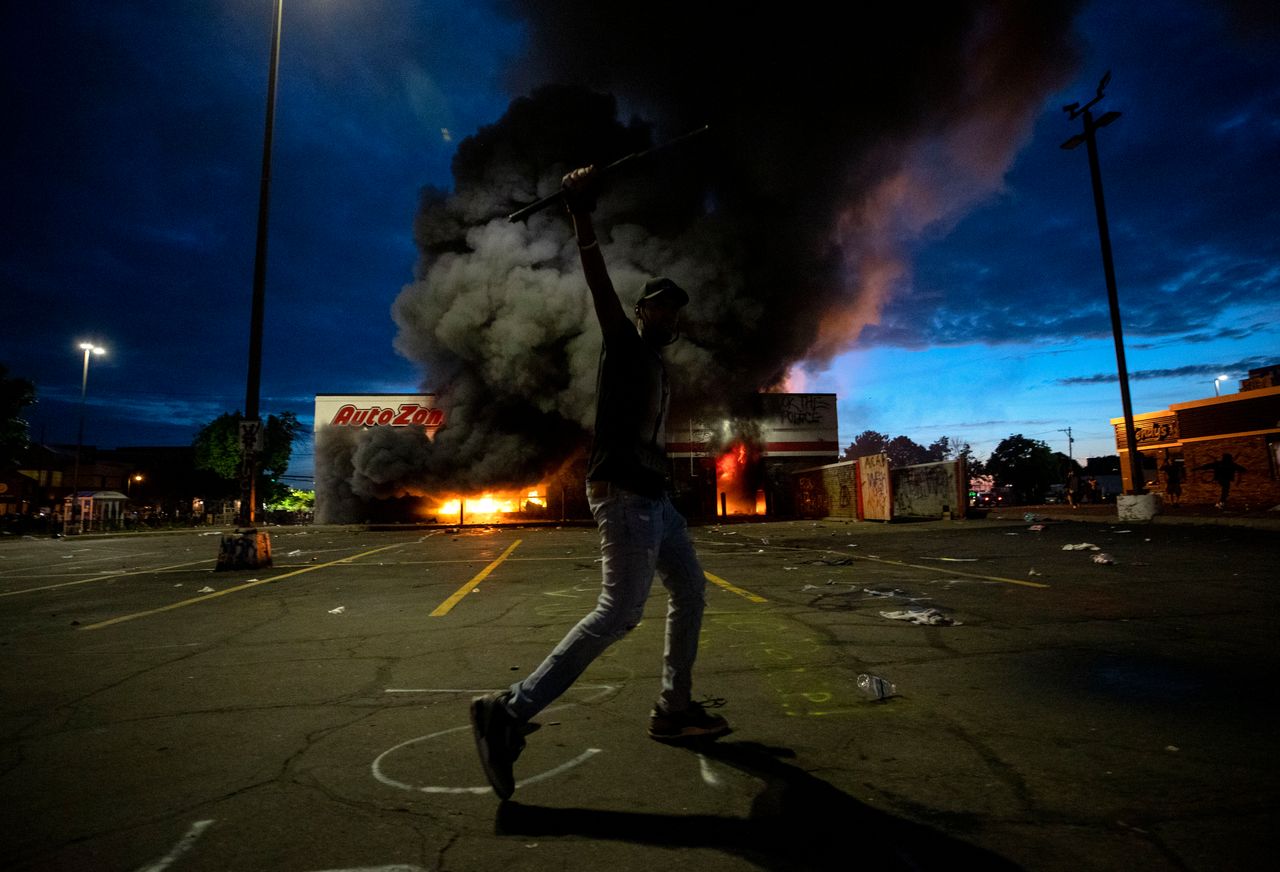
Hundreds of protesters, many with faces covered, thronged streets around the Third Precinct police station late on Wednesday, about half a mile from where Floyd had been arrested, chanting: “No justice, no peace” and: “I can’t breathe”.
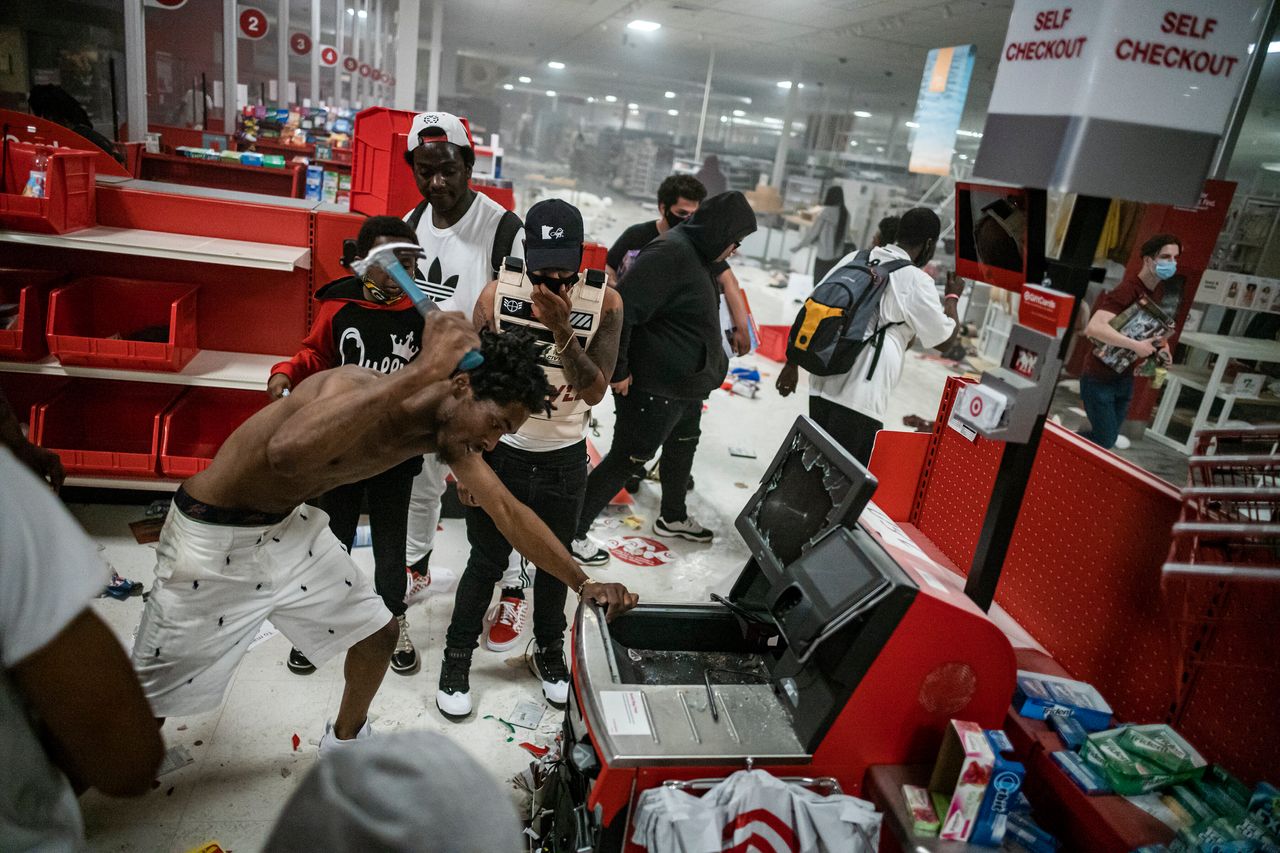
The crowd grew to thousands as night fell and the protest turned into a standoff outside the station, where police in riot gear formed barricade lines while protesters taunted them from behind makeshift barricades of their own.
Police, some taking positions on rooftops, used tear gas, plastic bullets and concussion grenades against the crowds. Protesters pelted police with rocks and other projectiles. Some threw tear gas canisters back at the officers.
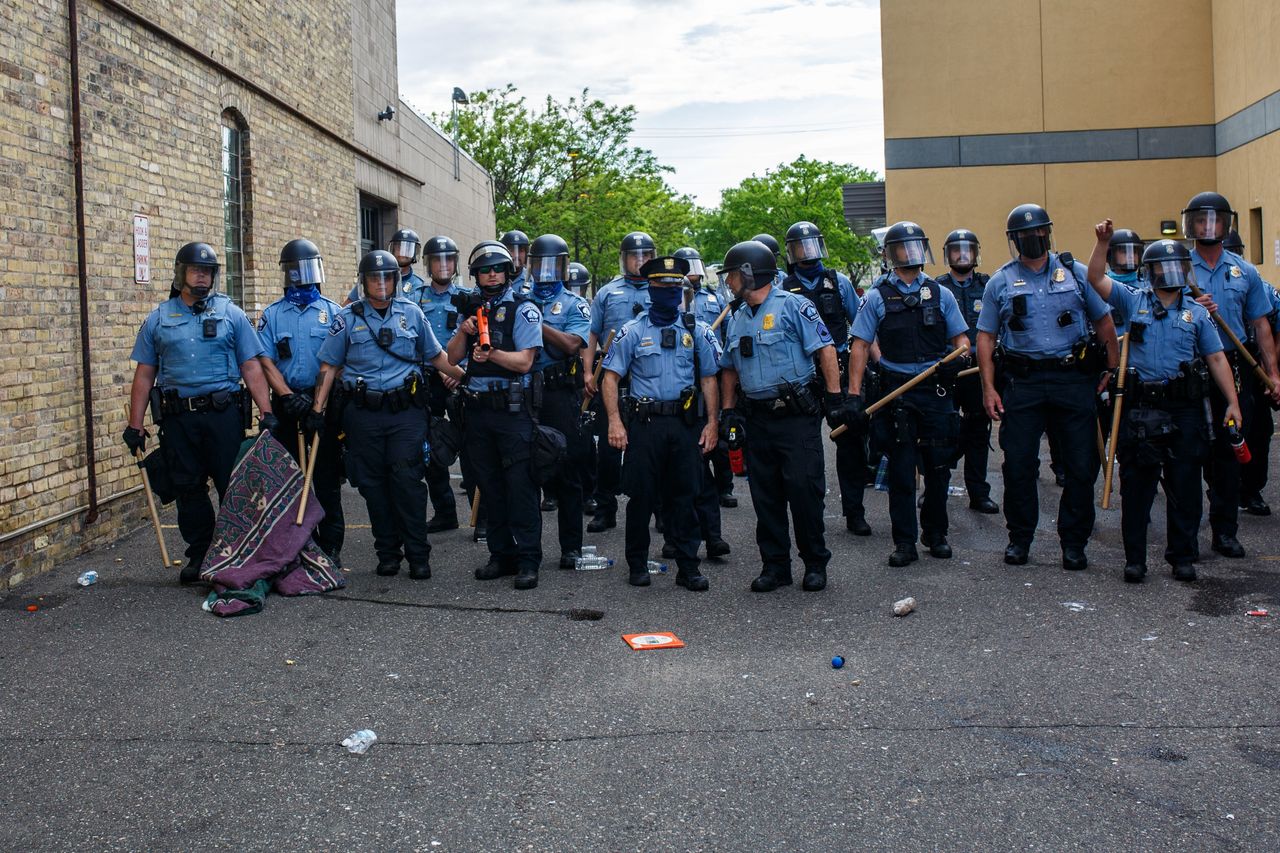
‘The last straw’
Mike Griffin, a community organiser in Minneapolis, said the protests reflected years of frustration over economic inequalities and the feeling that black lives were not valued as highly by police.
He said anger has been building since the 2015 fatal shooting by Minneapolis police of 24-year-old Jamar Clark, and the 2016 killing of Philando Castile, a 32-year old black man shot by Minnesota police during a traffic stop.
“George’s murder was just the last straw,” Griffin told Reuters, calling the charges against Chauvin a step in the right direction, but adding there needed to be systemic changes.
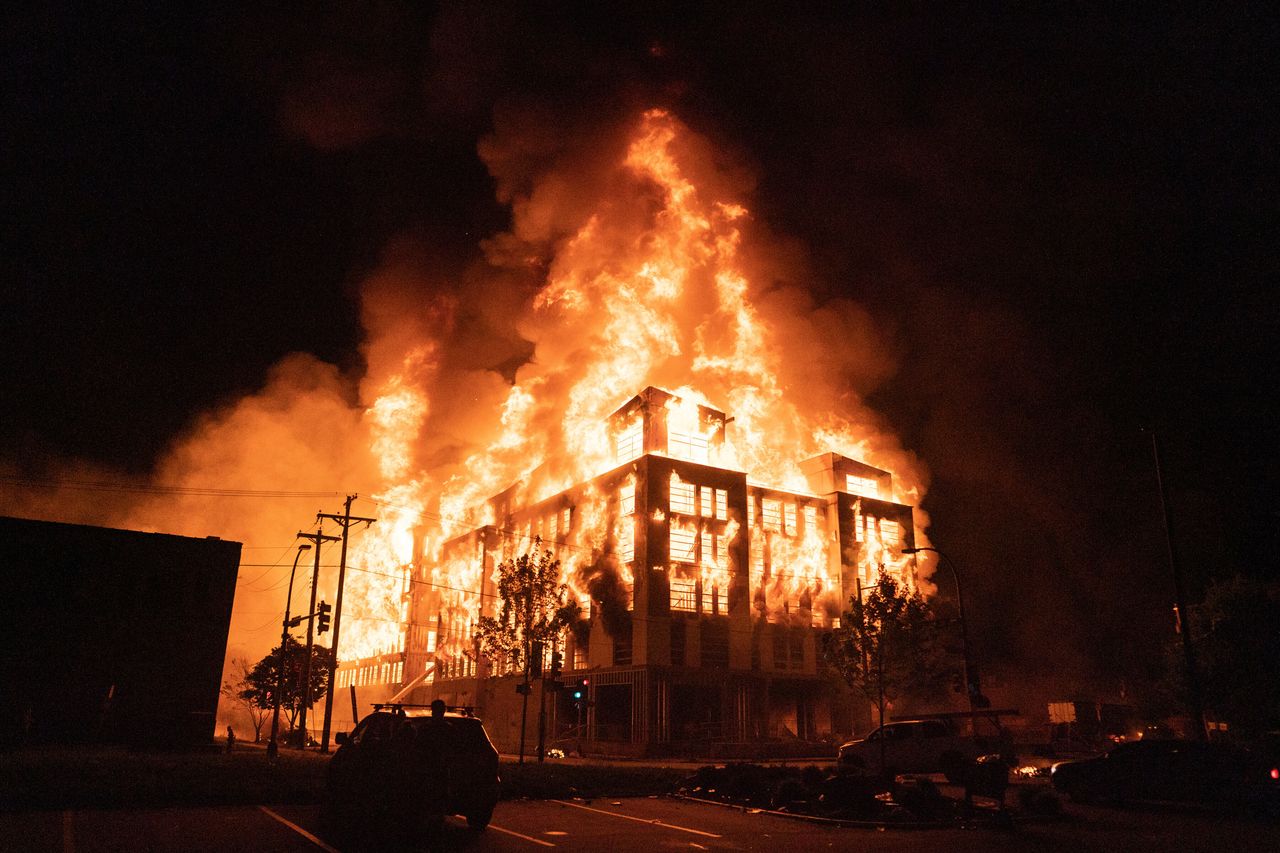
‘F*ck the police’
Also on Wednesday, protests spread across America with large demonstrations in Los Angeles and New York.
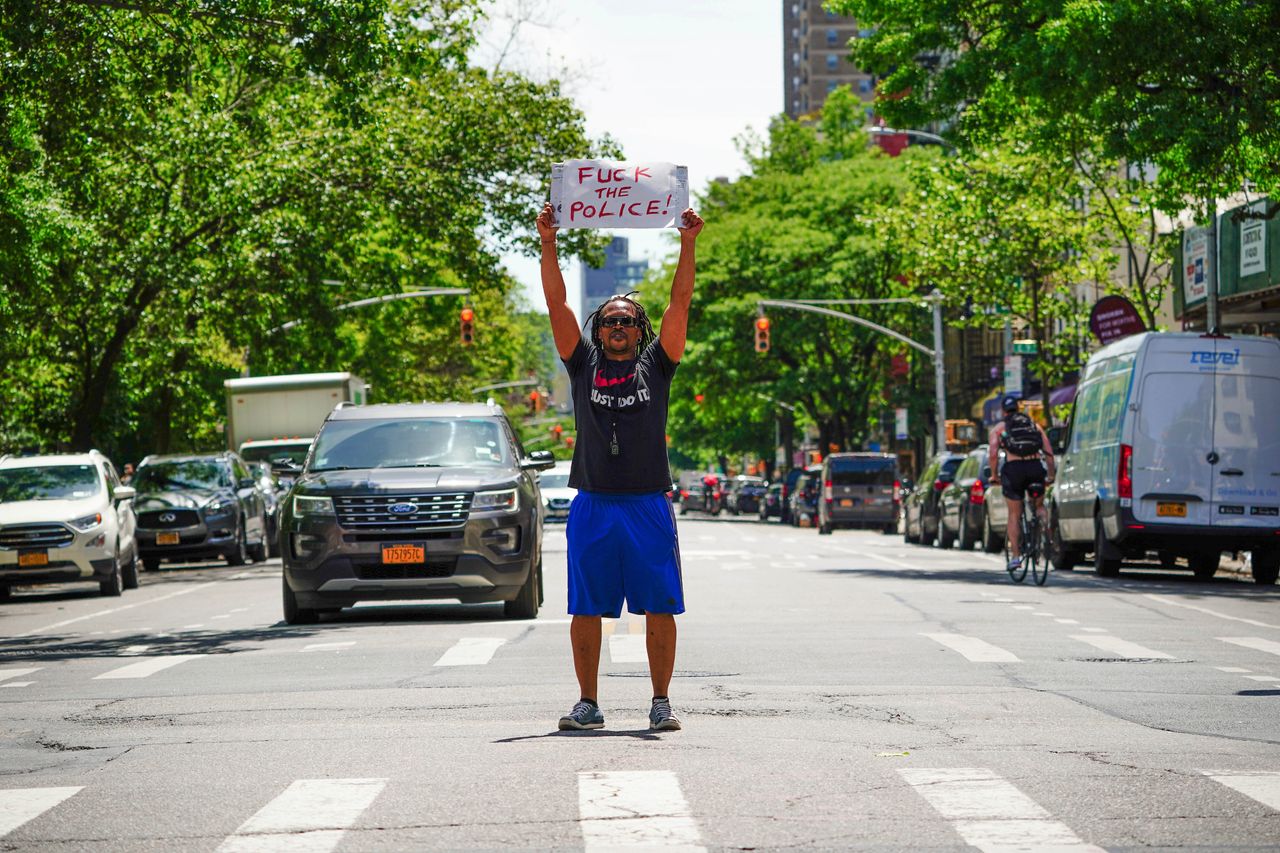
In Los Angeles, the demonstration turned violent after a crowd marched onto a nearby freeway and blocked traffic, then attacked two California Highway Patrol cruisers, smashing their windows, local media reported.
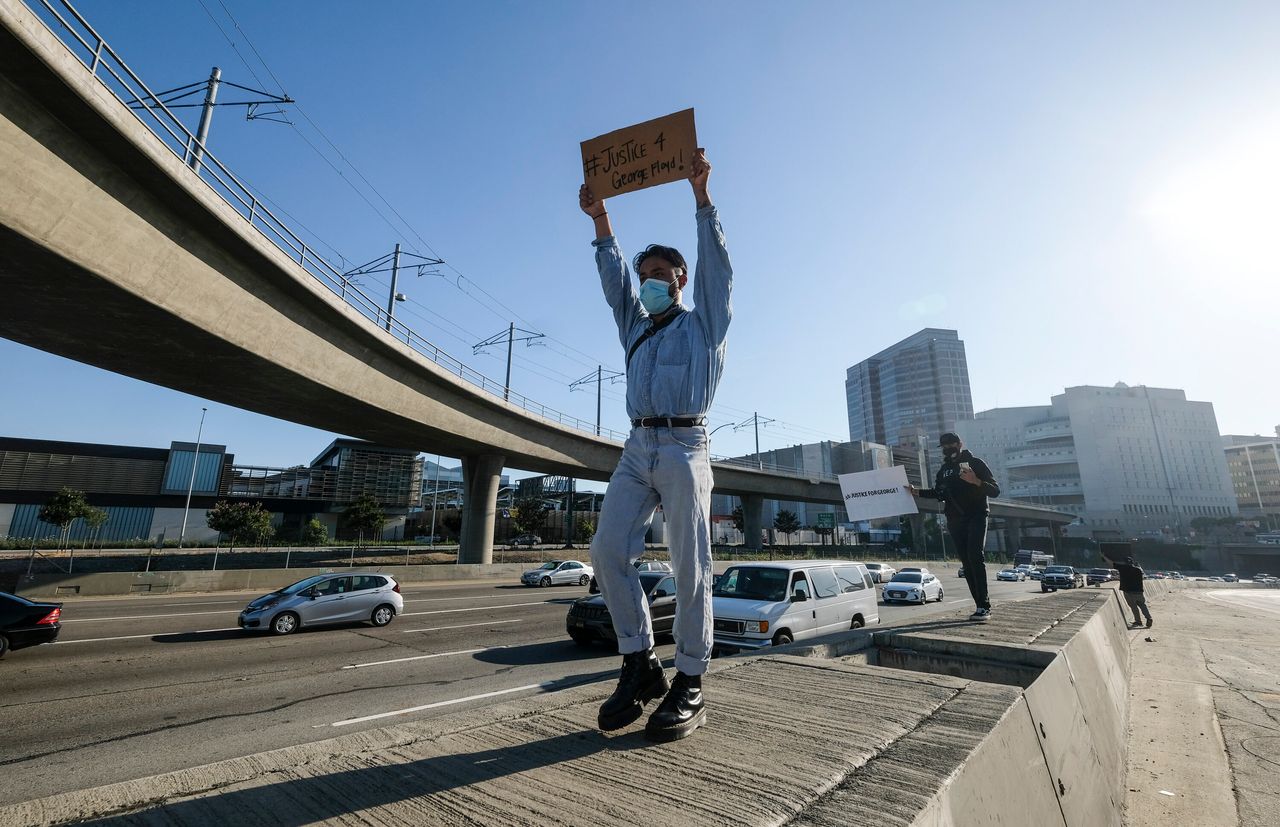
One protester who clung to the hood of a patrol car fell to the pavement as it sped away, and was treated at the scene by paramedics, news footage of the incident showed.
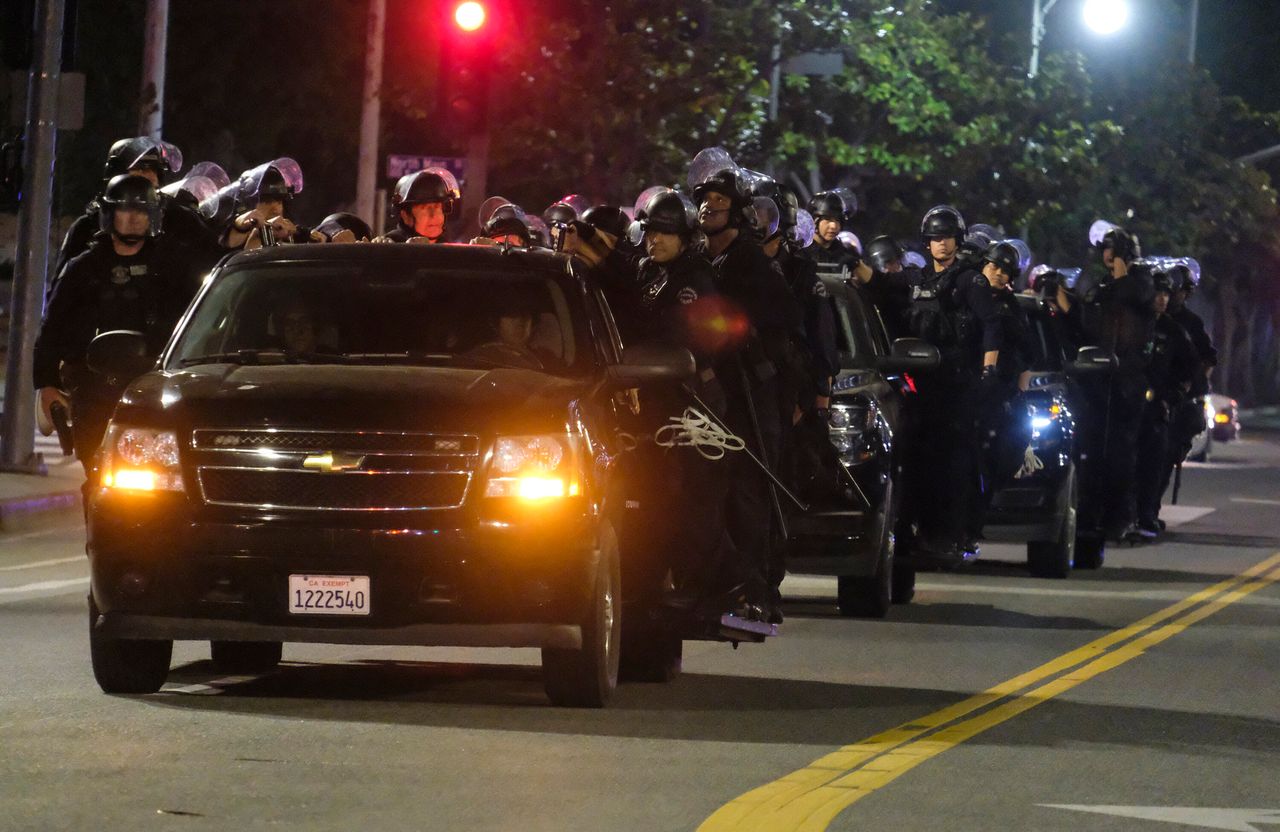
In Minneapolis, the sun rose over a charred and still-smoking city.
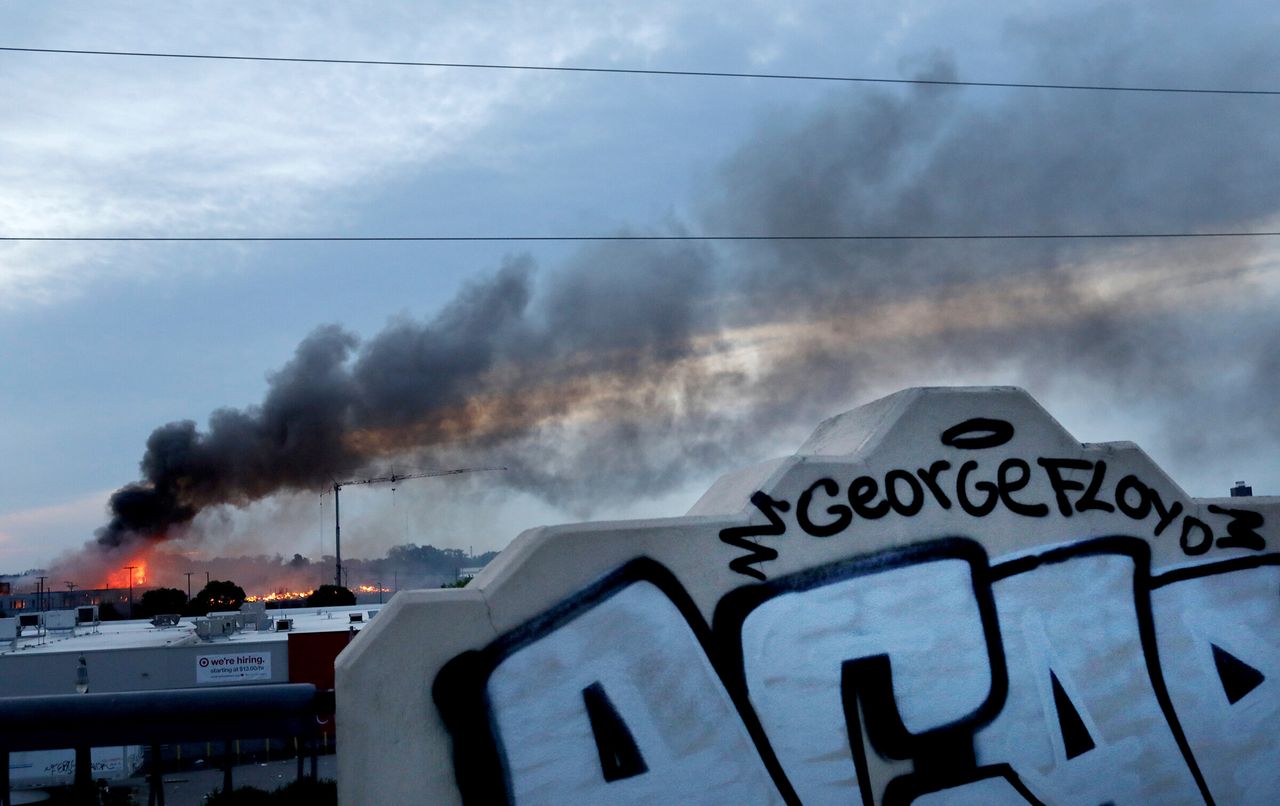
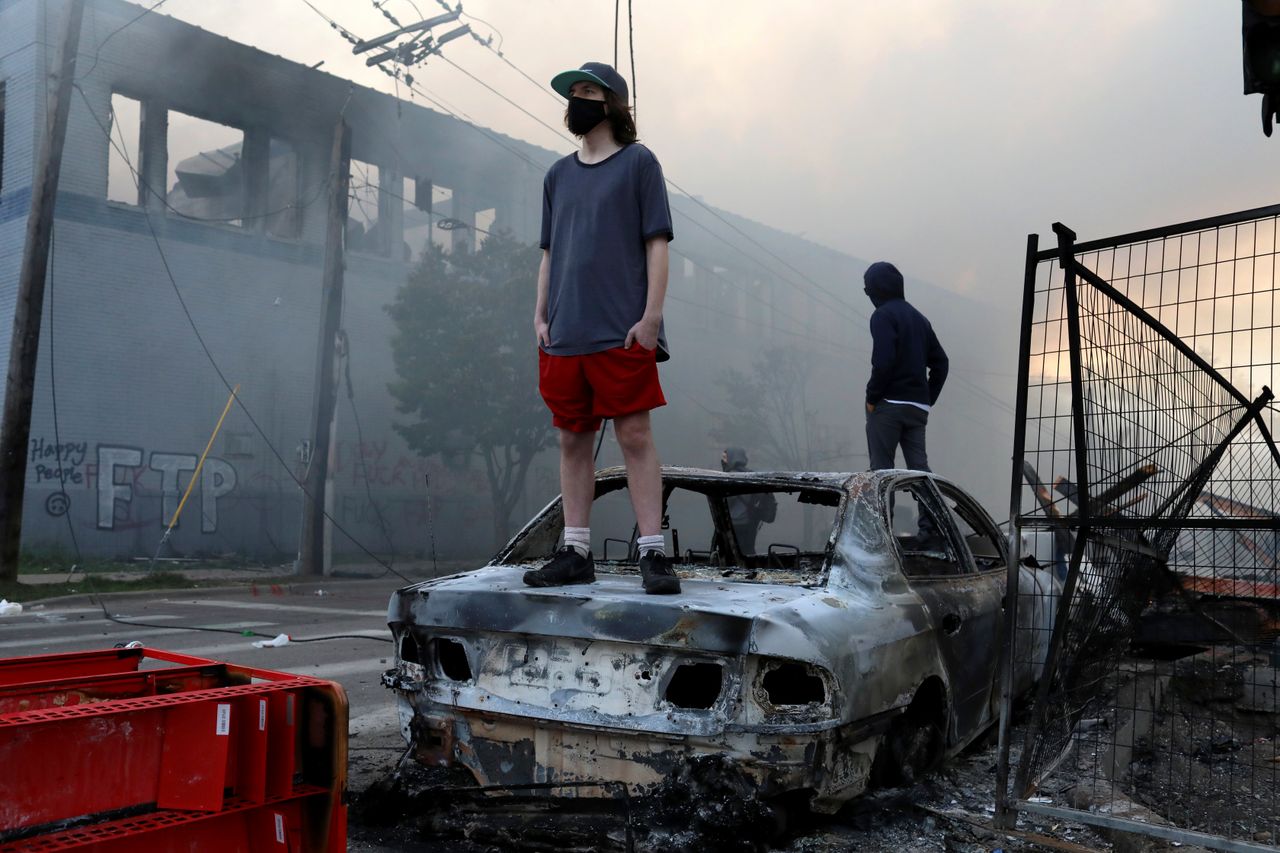
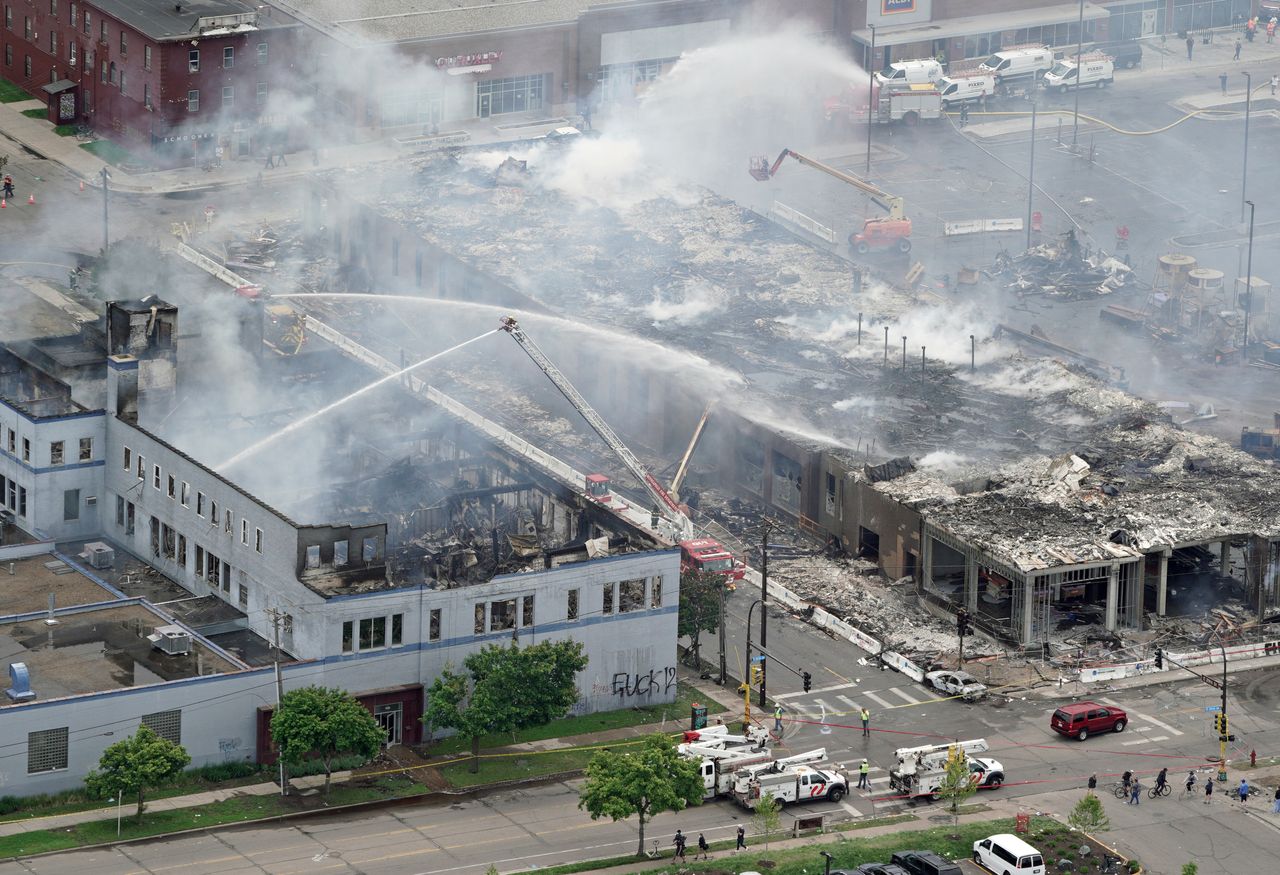
Peaceful rallies during the day gave way to a third night of arson, looting and vandalism in Minneapolis on Thursday as protesters continued to vent their rage.
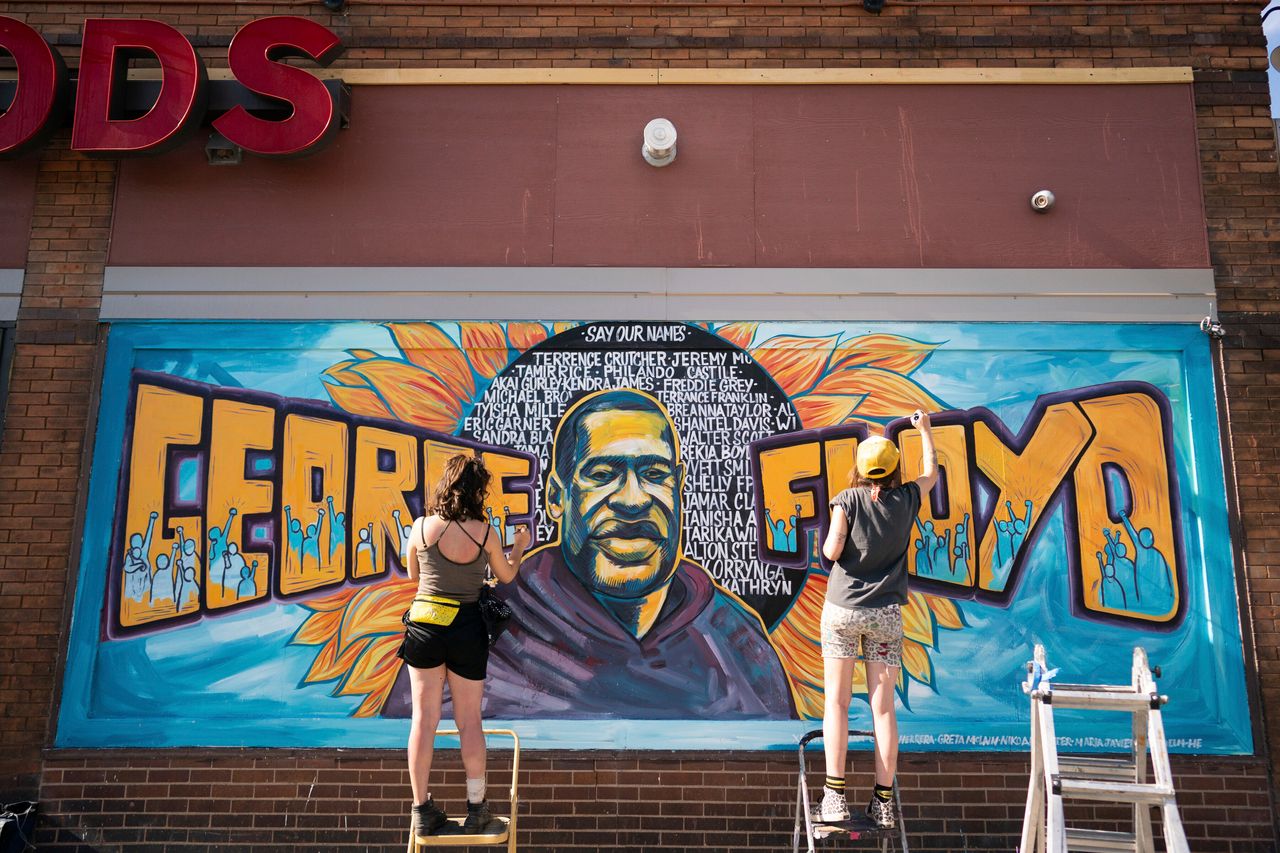
The latest unrest in Minnesota’s largest city went largely unchecked, despite Governor Tim Walz ordering the National Guard activated to help restore order following the first two days of disturbances.
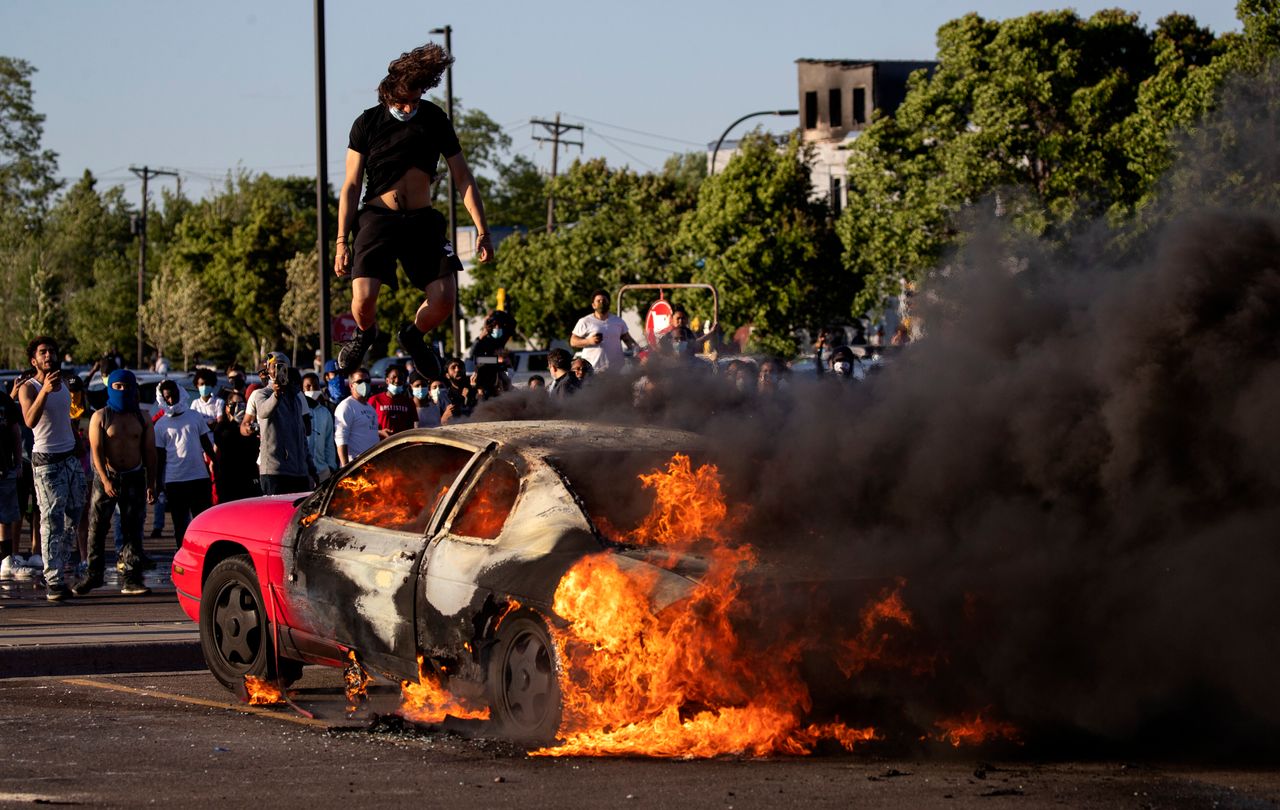
In contrast with Wednesday night, when rock-throwing demonstrators clashed repeatedly with police in riot gear, law enforcement kept a low profile around the epicentre of the unrest, outside the city’s Third Precinct police station.
Protesters massing outside the building briefly retreated under volleys of police tear gas and rubber bullets fired at them from the roof, only to reassemble and eventually attack the building head on, setting fire to the structure as police seemed to withdraw. Protesters were later observed on the roof.
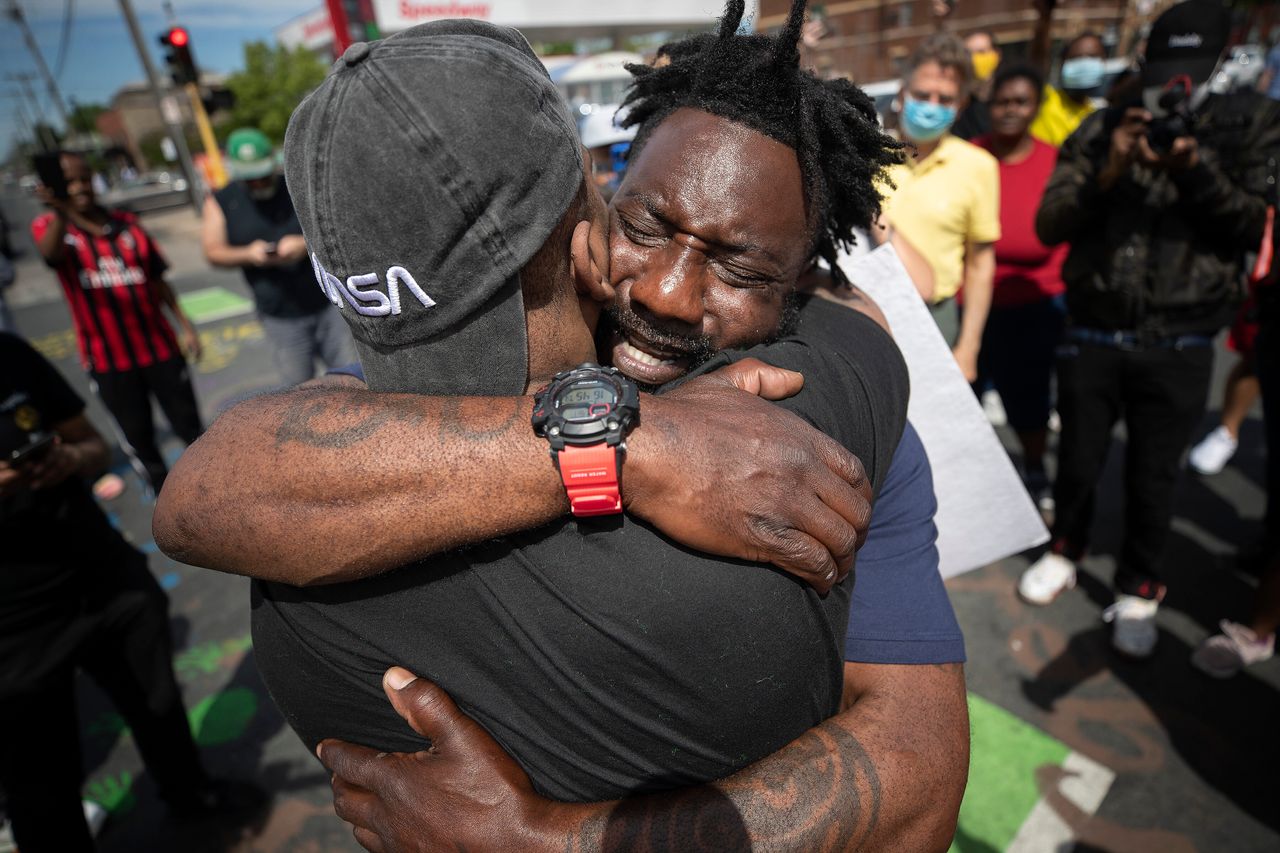

The city authority warned about “unconfirmed” reports that gas lines to the Third Precinct police station were cut and that there were other explosives in the building.
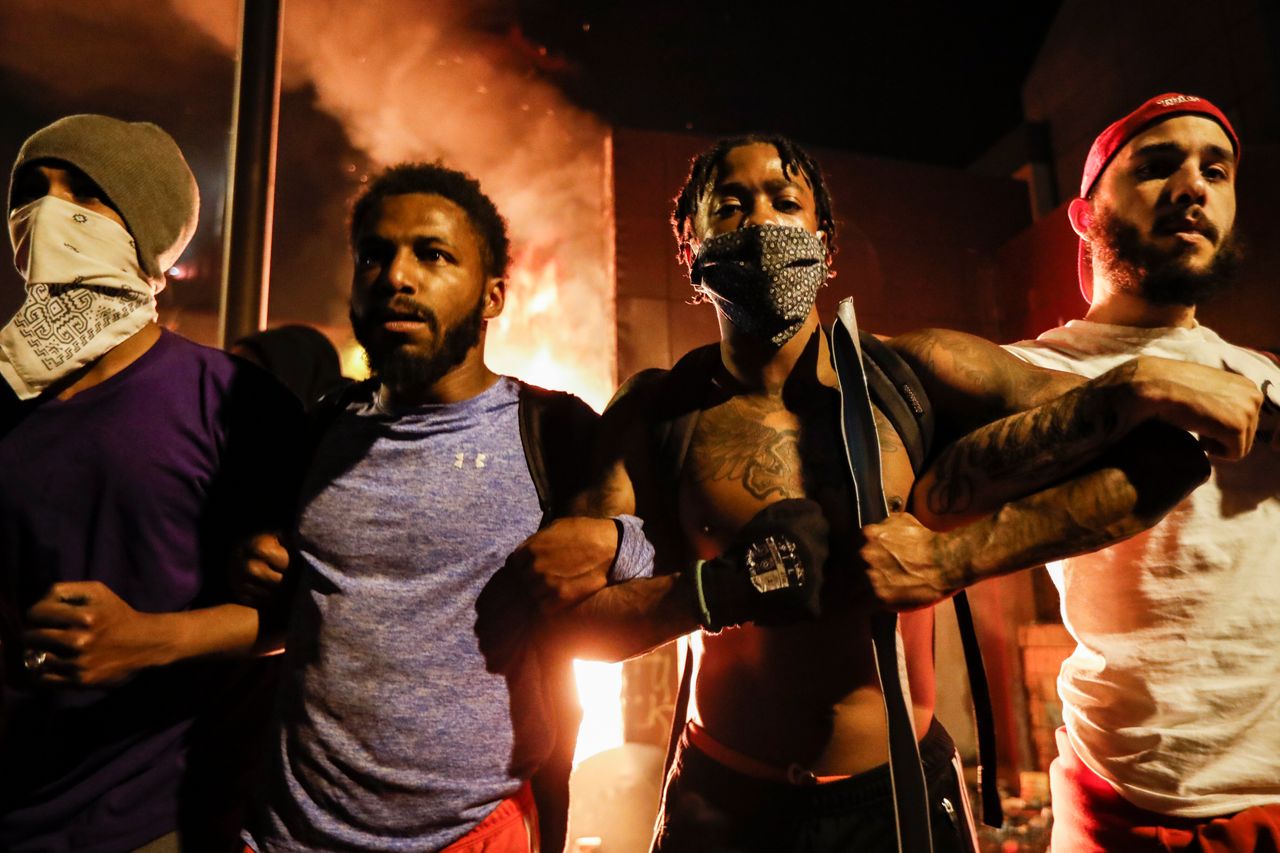
A car and at least two other buildings in the vicinity were also set ablaze, and looters returned for a second night to a nearby Target discount store, left boarded up and vacant from the previous night, to make off with whatever remained inside.
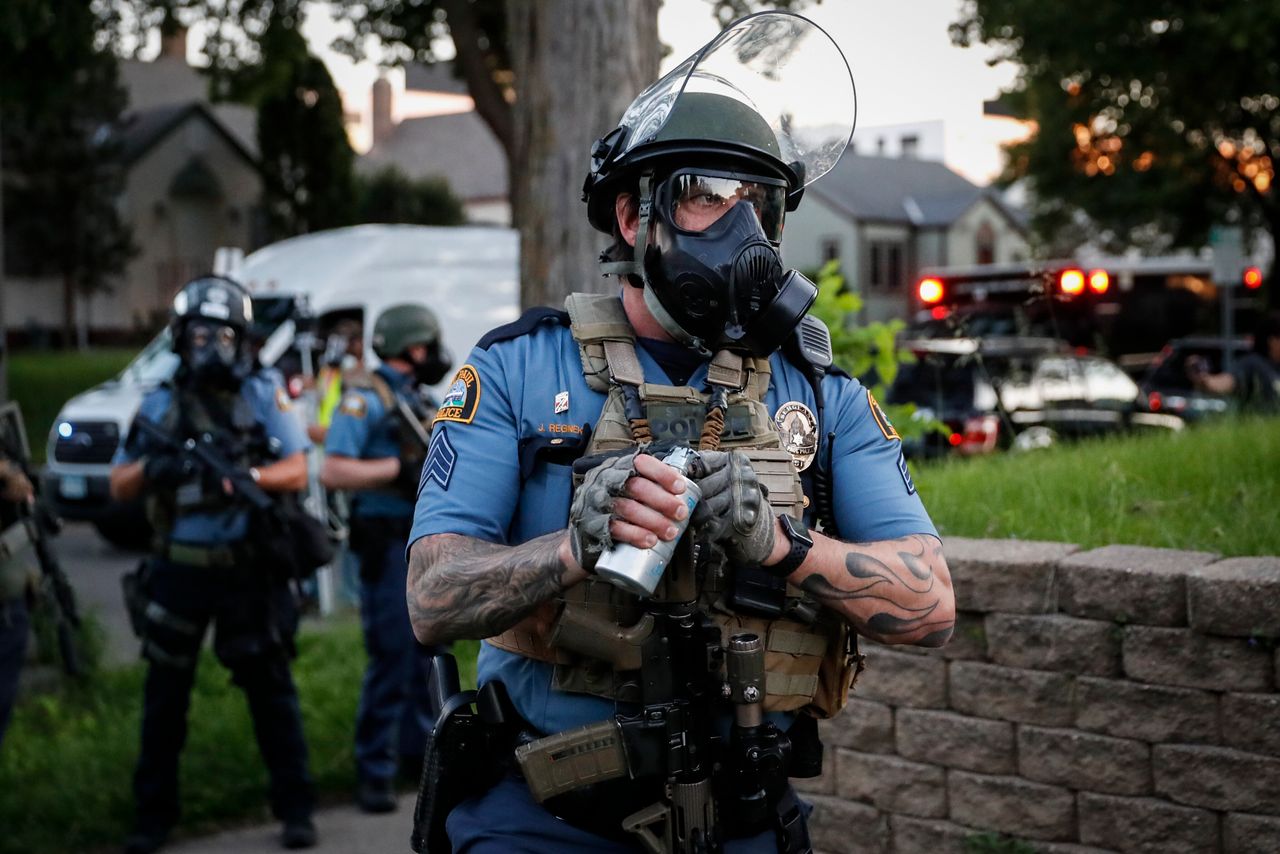
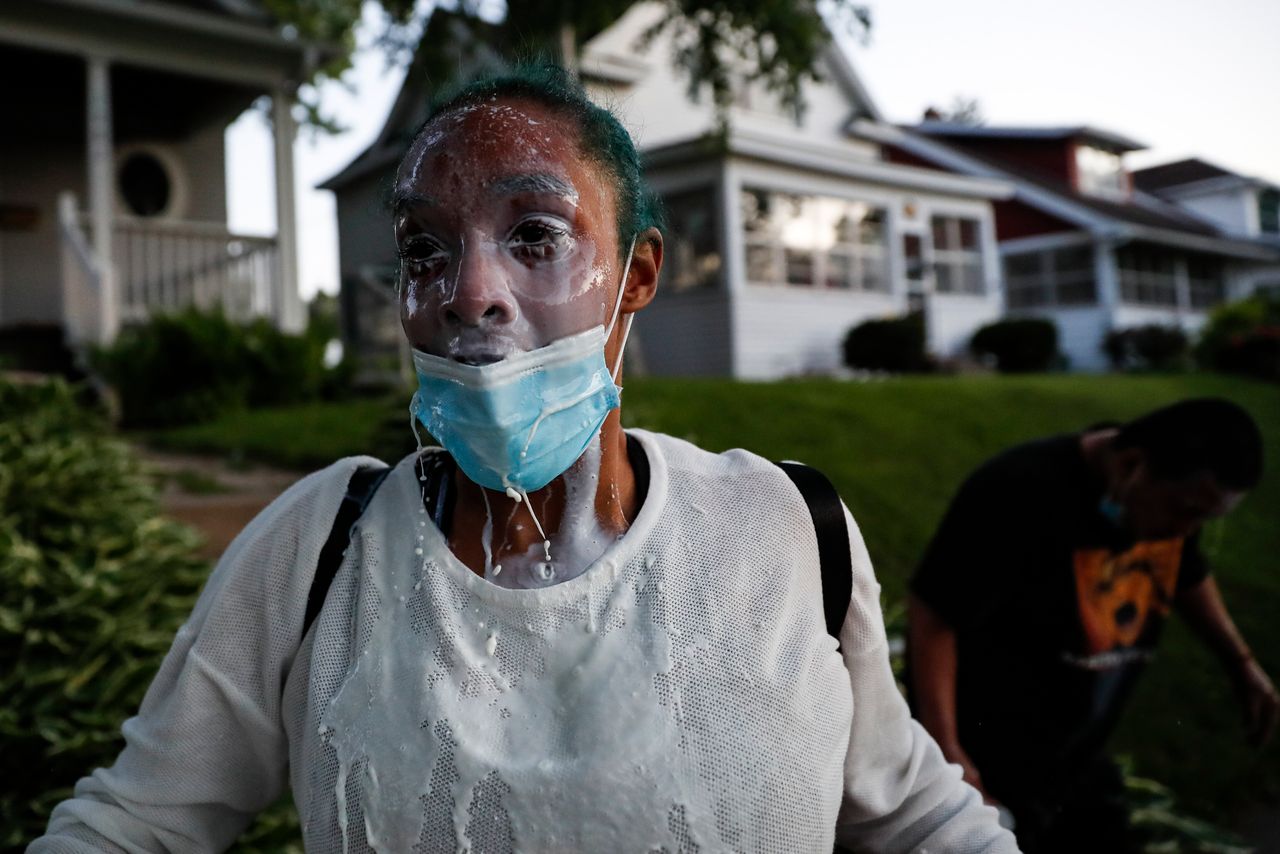
By nightfall parts of the city were once again ablaze.
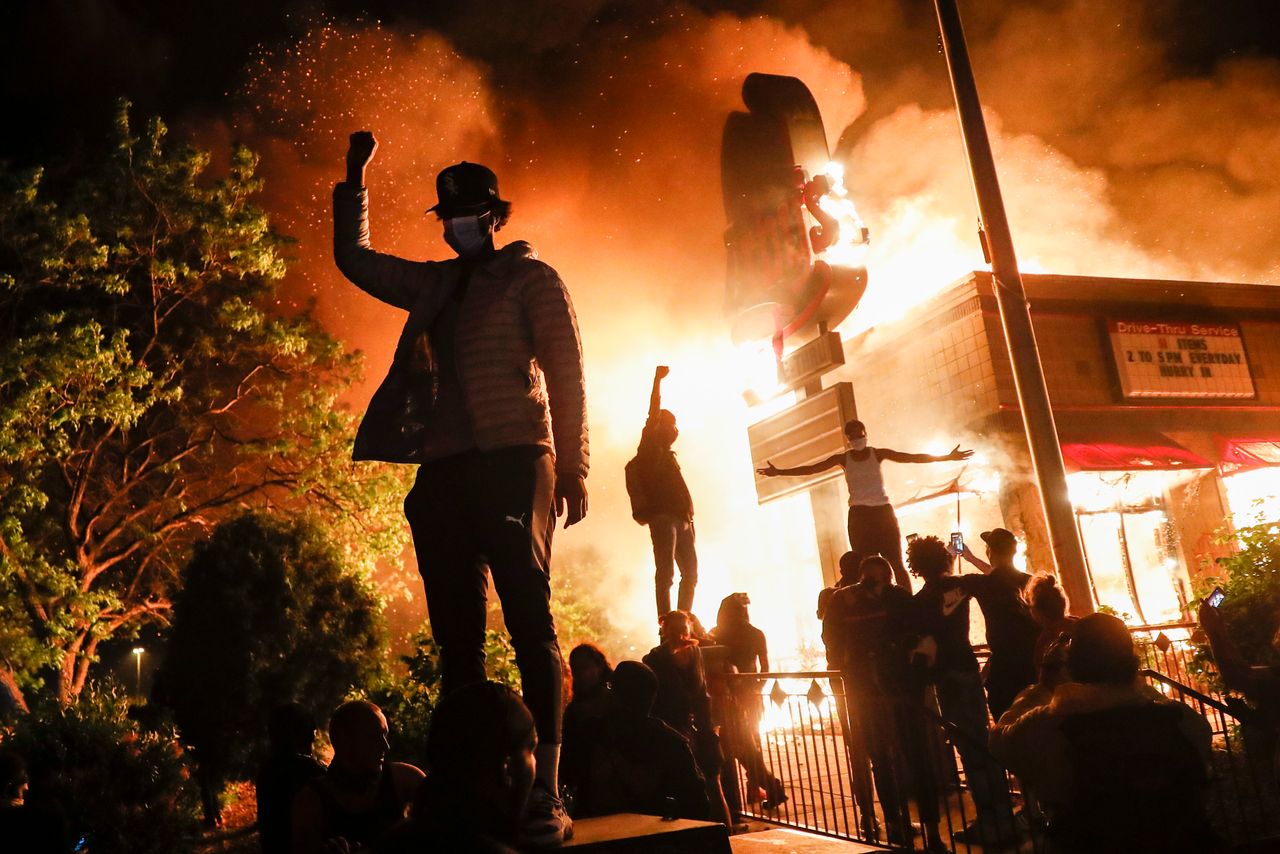
President Donald Trump got involved and warned he would send the National Guard troops and “get the job done right” if Mayor Jacob Frey failed to bring the city under control.
A second tweet from Trump that said “when the looting starts, the shooting starts” was later hidden by Twitter which accused the president of breaking its rules by “glorifying violence”.
At a Friday morning news briefing, police chief Medaria Arradondo publicly apologised to Floyd’s family, conceding his department had contributed to a “deficit of hope” in Minneapolis.
‘The horrible, horrific, terrible thing’
Hours later, Derek Chauvin, the Minnesota police officer filmed kneeling on Floyd’s neck was arrested and charged with third-degree murder.
Hennepin County Attorney Mike Freeman, announcing Chauvin’s arrest earlier in the day, said a key piece of evidence in the case was the video clip showing Floyd lying face down in the street, with Chauvin kneeling on the back of Floyd’s neck.
“We have evidence, we have the citizen’s camera’s video, the horrible, horrific, terrible thing we have all seen over and over again,” Freeman said. “We have the officer’s body-worn camera, we have statements from some witnesses.”
Chauvin’s arrest wasn’t enough to stop a fourth night of protests as violence even further afield as crowds took the the streets in Washington DC, Denver, Houston, Atlanta, Detroit and Louisville, Kentucky, as well as further demonstrations in NYC and LA.
Police and Secret Service agents were out in force around the White House before dozens of protesters gathered across the street in Lafayette Square chanting, “I can’t breathe.”
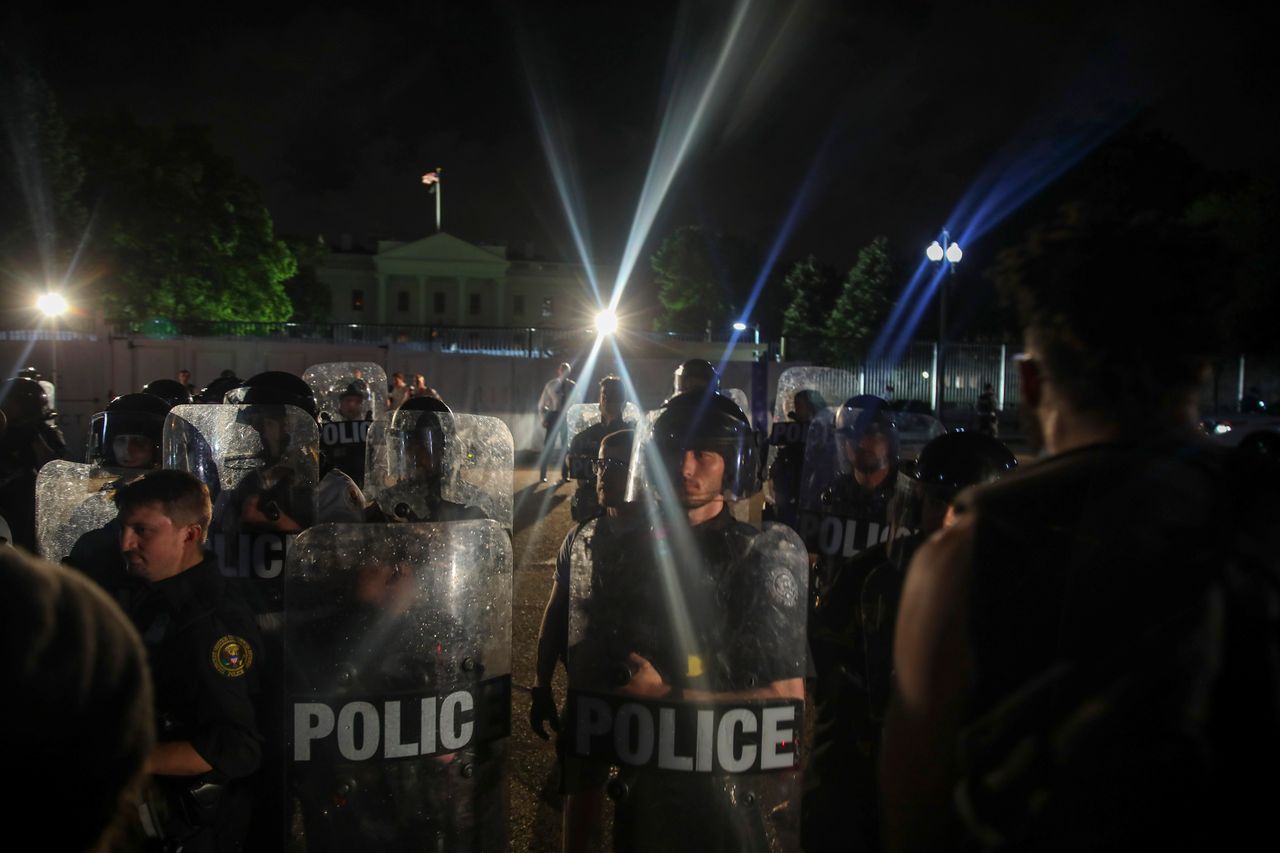
Thousands of chanting demonstrators filled the streets of New York City’s Brooklyn borough near the Barclays Center indoor arena. Police armed with batons and pepper spray made scores of arrests in sometimes violent clashes.

